Wildflowers and wildlife in Yosemite meadow

While the sheer cliffs and towering waterfalls of Yosemite National Park tend to get all the attention, Cook’s Meadow in the valley is also beautiful. During our June visit (click here for how we pulled off our socially distanced road trip), I walked the meadow’s 1-mile loop trail twice, excited to spot lots of milkweed and a monarch or two, plus many other small creatures and lovely plants.
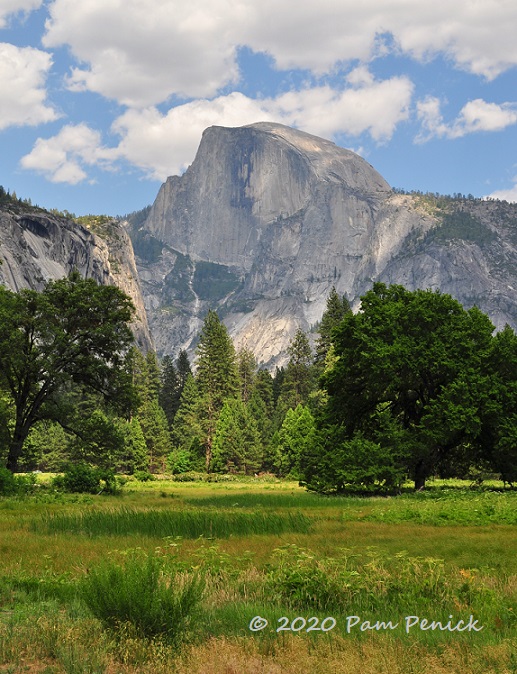
Surrounded on all sides by vertical walls of granite, the meadow’s flat openness offers visual relief, not to mention a great spot to admire the iconic scenery of the park, like Half Dome. Snowmelt and rainwater flow into the meadow, which tends to be marshy, and its delicate ecosystem is protected via boardwalks, with signs urging visitors to stay on the trails and not tromp through the plants.
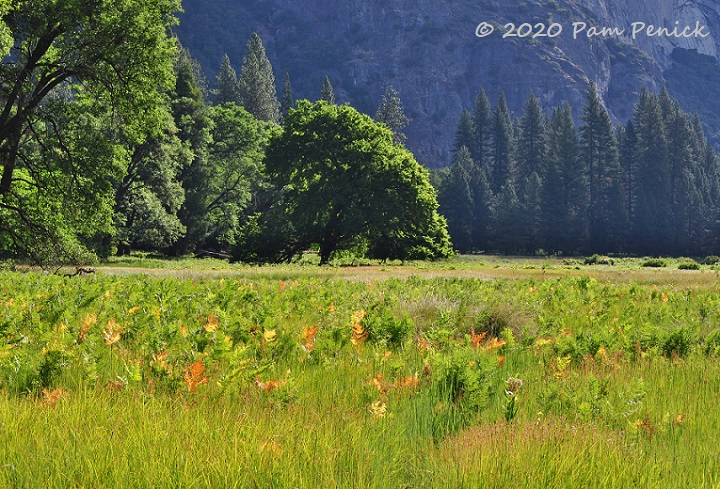
Yosemite’s meadows were cultivated by native peoples, who set fires to burn off trees and keep the meadows open in order to harvest certain plants. When white settlers arrived in the 1850s with their livestock, they viewed the grassy meadows as prime grazing lands, and their sheep and cattle soon decimated the native flora. Putting an end to meadow fires (both those set by indigenous people and those caused by lightning) impacted meadow ecology, as did the arrival of hordes of visitors when Yosemite became a national park. Today, restoration of the meadows is ongoing, even as a new threat has arisen: climate change, which is causing higher annual temperatures and drier conditions.

The meadow’s boardwalk trail invites a lowered gaze, which allows you to take in the small details and beauty of the plants and animals that make up this unique ecosystem.

In early summer some of the meadow’s ferns were turning gold, as if autumn were right around the corner. I don’t know why, but the effect was lovely against the lush greenery.

Native milkweed (Asclepias speciosa) was flowering throughout the meadow, attracting butterflies, bees, and other insects.
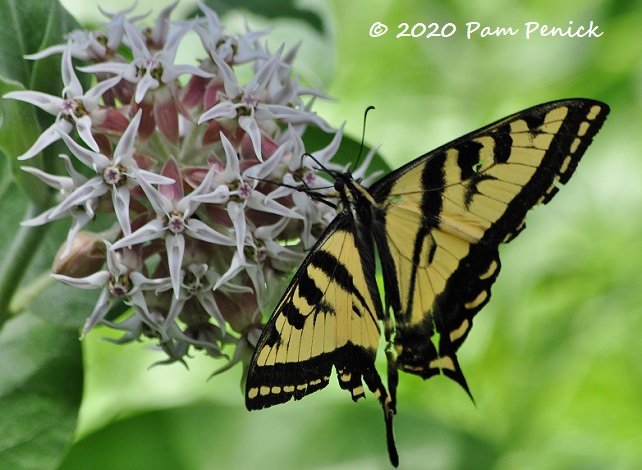
Tiger swallowtail butterfly visiting a milkweed flower
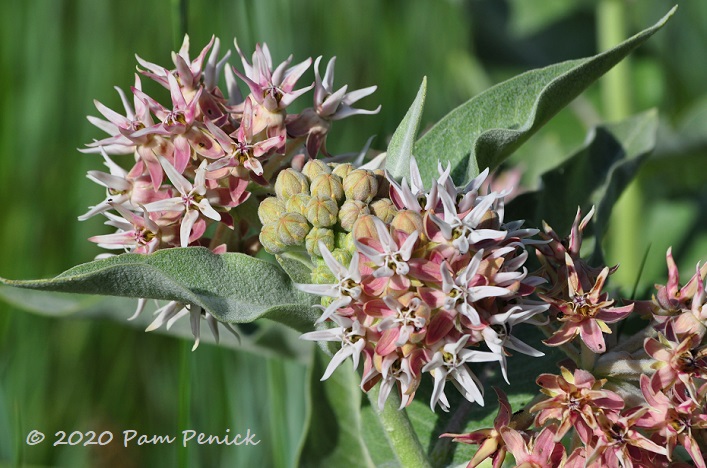
Milkweed closeup
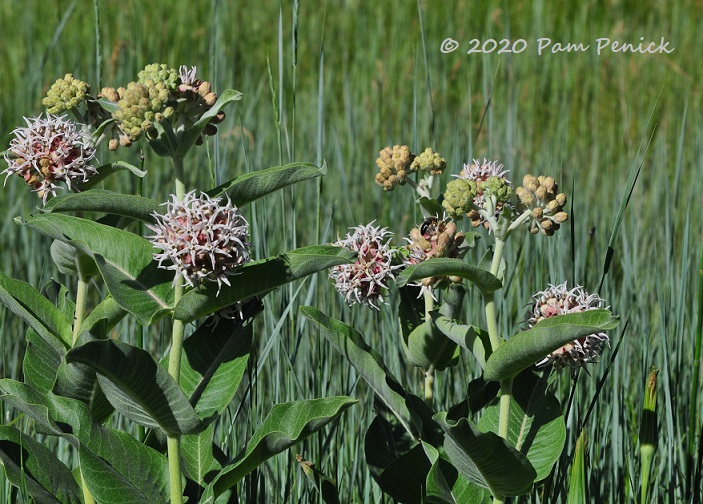
The spherical, pink flower clusters were picturesque amid the vertical, blue-green stems of meadow grasses.

The felted leaves have a silvered appearance in sunlight.

At one end of the meadow, the trail leads through a stand of tall pines, whose dark trunks frame a Christmas-tree conifer.
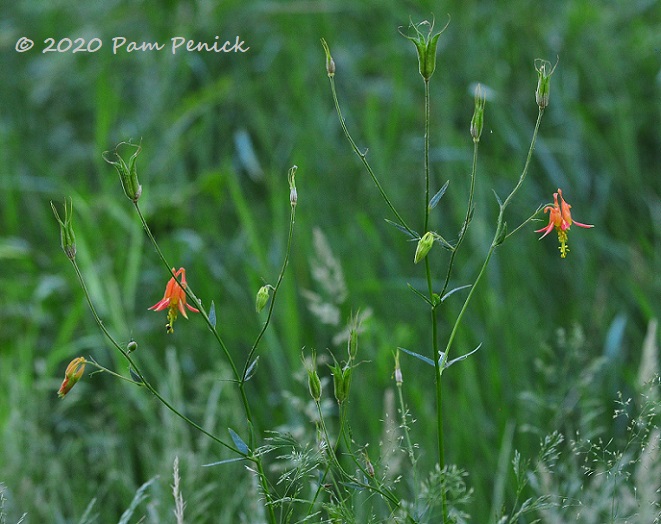
Here I found red columbine flowering.

The boardwalk trail
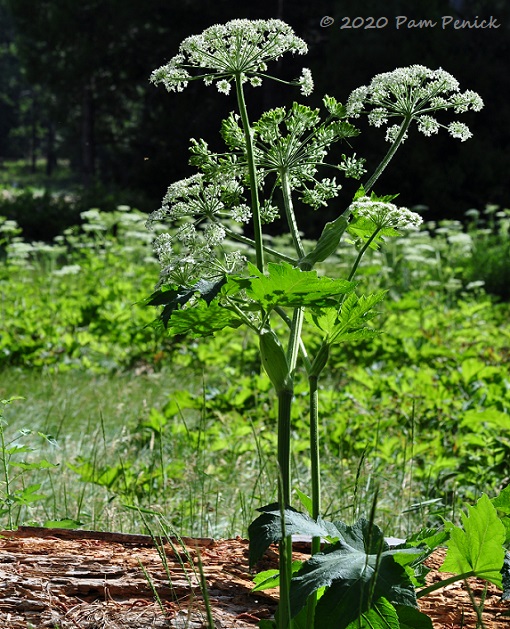
A swath of native cow parsnip (Heracleum maximum)

A Sierra fence lizard perched atop a broken tree stump. He’s the king of the world!

Sierra fence lizards were everywhere, sunning themselves on the boardwalk, chasing each other around tree trunks. Check out those long toes and the pretty blue markings on its back.
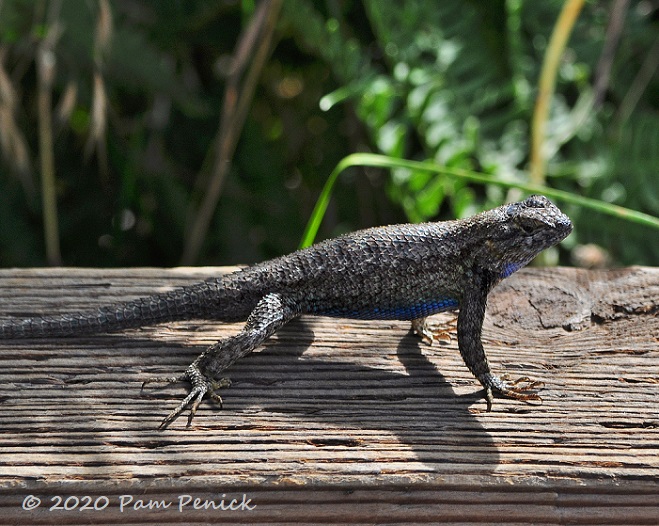
The males have bright blue bellies and throats. This big guy was doing pushups to impress a female on the boardwalk rail.

Was she impressed? Perhaps not. She soon turned and darted away.

American robin keeping a wary eye on the paparazzi
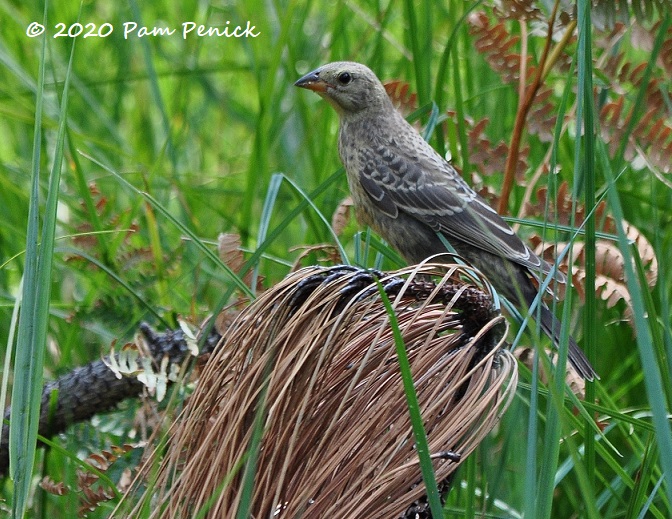
Anyone know what this bird is? Update: It’s a juvenile brown-headed cowbird. (Thanks, Lisa!)

At every turn the scenery is grand — those lucky birds and lizards! Here’s the white plume of Yosemite Upper Fall, with a white-flowering azalea in the foreground.
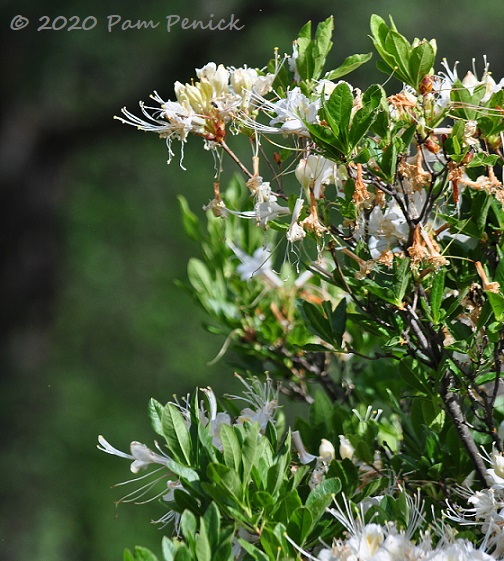
The azaleas were just past peak but still had plenty of flowers.

More Sierra fence lizards with those distinctive blue-spotted backs.

Cow parsnip and azalea amid rippling waves of blue-green and bronze grasses. A fringe of tall trees and dark, vertical cliffs make a dramatic backdrop.

Golden hour in the meadow, a peaceful yet lively place. This is my final post about Yosemite National Park, which I hope you’ve enjoyed reading about.
Next up: Wildflowers on a seaside bluff at Montana de Oro State Park, near San Luis Obispo, California. For a look back at my 2nd post about Yosemite and a thrilling tale of an earthquake and a Half Dome hike, click here.
__________________________
Digging Deeper
Come learn about gardening and design at Garden Spark! I organize in-person talks by inspiring designers, landscape architects, authors, and gardeners a few times a year in Austin. These are limited-attendance events that sell out quickly, so join the Garden Spark email list to be notified in advance; simply click this link and ask to be added. Season 8 kicks off in fall 2024. Stay tuned for more info!
All material © 2025 by Pam Penick for Digging. Unauthorized reproduction prohibited.


Gorgeous and you captured it beautifully in your photos! I love that they are restoring the meadow despite the challenges!
Thanks, Karin. It must be a challenge to know how much to intervene, as a park management issue. But keeping visitors out of the plants and on the trails must be a priority. Since the meadows were overgrazed and later partially paved over, they’ve had a lot of work to do, I’m sure.
I think your bird is a juvenile Brown-headed Cowbird. I thoroughly enjoyed your Yosemite presentations.
I think you’re right, Lisa. Thanks for the bird ID!
With all of the magnificent vistas in this park that generally capture the most attention , you’ve managed to bring out the more subtle beauty that also exists there. Wonderful photos, Pam!
Thanks so much, Ellie!
I enjoy all your posts; this series on Yosemite included! Your photos are magnificent and your comments much appreciated. Thank you!
Aw, thanks, Ragna! I’m so glad you enjoyed the posts. 🙂
What wonderful photos, Pam!
Yosemite was one of my special places growing up — a family friend was a seasonal naturalist there, so we visited them on our long family camping trips from Austin in the summer, not infrequently.
And as a grad student in the Bay Area, I traveled through Yosemite to the White Mountains, where my now hubbie did his dissertation field work.
An amazing and very special place.
How wonderful to have so many memories from time spent there, Lisa. It’s indeed a special place.
Those trees got my attention like the flowering plants in the meadow did. Now to read more on the trees and climate of the Yosemite Valley. My only visit there: HS Soph, 1981…
You’ve way overdue for a return visit, David. 🙂